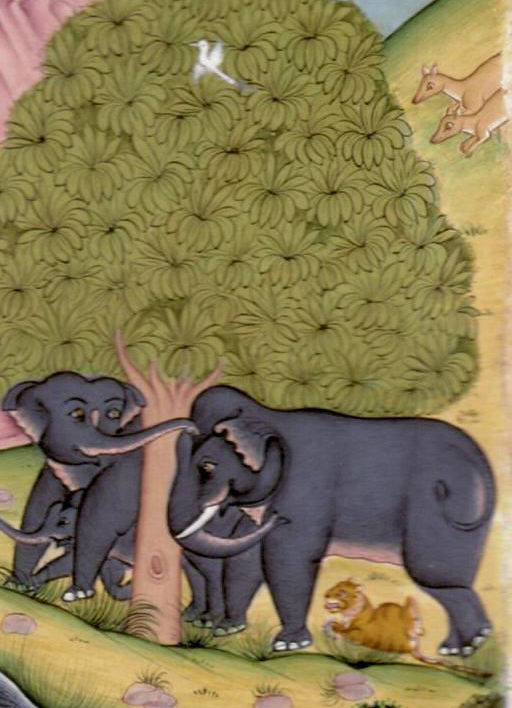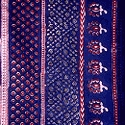Bundi was one of the important schools of Rajasthani school of paintings, which originated in the 17th century. In its earlier stages, Bundi paintings could not be distinguished from Kota school of paintings because they were united until the second quarter of the seventeenth century. The earliest of the Bundi paintings are Ragamala, which can be seen in Chunar.
Bundi paintings showed picturesque landscape, dramatic skies, thick jungles, flowing rivers, lotus ponds, etc. The themes were generally court scenes, festivals, processions, the life of people, Harem or Zenana scenes, hunting scenes, portraits etc. During its mature phase of Bundi paintings, human figures were seen with a reddish brown complexion. Females wearing odhani (veil), choli (blouse) and ghaghra (skirt) are seen, whereas men are seen wearing jamas (long coats) over churidar pyjamas. They are also seen wearing turbans adorned with feather occasionally.
The architecture and interiors in the paintings are illustrated elaborately. Domed pavilions, interior with alcoves, chajjas (overhanging eaves), etc. are usually set in the landscape setting of the painting.
Towards the end of the 17th century, paintings underwent few changes. It showed human complexion in flesh – pink color and faces more refined. Water is seen with wavy white lines against a dark indigo background. Artists also started using vivid colors for the sky and the landscape. They also started painting elephants, a huge animal with such ease and fluidity. A painting in Prince Wales Museum (now known as Chhatrapati Shivaji Maharaj Vastu Sangrahalaya), known as Summer Elephant shows hot colors – red, orange and yellow with great ease. Artists favourite themes during this period were Krishna and its legends, along with Baramasa and Rangmala.
Towards the end of the eighteenth century, there was a gradual decline in the Bundi school of paintings.

